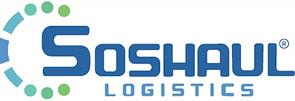Marketing 101 for a Trucking Business
- Samantha Allen & Dr. Sean Goffnett

- Jan 15, 2024
- 4 min read
Updated: Jan 18, 2024
Like any business, sales and marketing are critical facets in the logistics industry (this includes transportation). Sales and marketing unlock new business opportunities that facilitate revenue and growth for a business. Marketing educates consumers about a business’s products, services, brand, and most importantly, their value. Let’s chat a little bit more about specific marketing terminology and strategy for a trucking business.

What is a Brand? What is Branding?
By definition, “A brand is a name, term, design, symbol, or any other feature that identifies one seller’s good or service as distinct from those of other sellers”. In other words, a brand is the sum of your brand elements that create an impression on consumers. Your brand is how a person feels about your products/services or company. Branding is the “process of giving meaning to a specific organization, company, products or services by creating and shaping a brand in consumers’ minds.”
To begin the branding process for your own business, consider the following questions:
What is your brand’s purpose?
What do I want my brand to achieve?
What is my brand personality?
Who is your ideal customer in detail?
What brand elements will you use? Colors? Logo? Taglines? Fonts?
What kind of tools will you use to communicate your brand?
What is a Value Proposition?
One of the most important marketing concepts is the Value Proposition. This is a promise of value to be delivered, communicated, and acknowledged and usually comes in the form of a simple statement summarizing why the customer would choose your company and services.
Its purpose is to make the value and benefit of your product or service loud and clear. There are five ways to think about your value proposition and the position of your brand. These include – More for More, More for the Same, Same for Less, Less for Much Less, and More for Less. It is important to note that More for Less is not the only successful strategy! Think about the type of services you want to offer, your targeted customers, your goals, and your competitors.

Consider the value proposition of your trucking business. Understanding this important aspect of “why?” from the customer’s point of view will help form the rest of your business and marketing strategy.
What are the 4 P’s of Marketing?
If you have ever taken a marketing course, you likely recognize these 4 categories: product, price, place, and promotion. Commonly referred to as the 4 P’s, these categories represent what is called the Marketing Mix.
This model is commonly used to help businesses define their marketing options to help meet customer needs and their own goals. These 4 key elements combined foster a brand’s unique value. Let’s break it down into a trucking context:
Questions to ask yourself about your trucking business include:
Product/Service – what services will I offer? Will I offer dry van, flatbed, or reefer transportation? Will I offer specialized equipment? Will I provide additional services to my customers to differentiate my business?
Price – at what price will I sell these services? Will I intentionally price lower than my competition or higher? What is the value of our service from the customer’s perspective? (while pricing will vary per load, it is good to have a target margin or rate per mile in mind)
Place – where am I offering transportation services? Where are my targeted customers/freight located? Are there any primary states/jurisdictions I provide services to and from? Are there any states/jurisdictions that I will not provide services for?
Promotion – how can I reach my target customer? When is the best time to promote my transportation services? Where will I send my marketing messages? What methods will I use to promote my business? Under the umbrella of Promotion lies the Promotional Mix. This mix contains 6 primary methods to communicate with your target audience. Read more about the Promotional Mix here.
Consider these questions – and the 4 P’s – for your business and take time to think about each of the 4 categories as you develop your business plan for moving forward. Think about this strategically. Consider your goals, resources, market research, and business expenses. This will help you define and create a marketing plan for your small trucking business that is refined and efficient!
Speaking of plans, check out our Trucking Business Plan Starter Bundle to start creating your business plan today! This comprehensive bundle serves as your roadmap, offering the tools needed to secure financing with a detailed business plan, define and accomplish business goals, make informed decisions on your business structure, become fluent in trucking industry lingo, and establish an effective budget. The Starter Bundle includes seven essential documents, featuring The Business Plan Guide (including four guiding documents), the SWOT Analysis Template, the SMART Goals Template, and the Business Structure Guide. Enjoy two BONUS items: a 160+ Word Glossary for the Trucking Industry and the Trucking Business Budget Template with Estimated Startup Costs. Make your trucking business dreams a reality with strategic planning and informed decision-making using this definitive bundle! A regular $80 value for ONLY $37! Learn more about the bundle HERE.

Interested in being notified when more free resources or courses are available? Subscribe down below and you'll be the first to know!
Soshaul Logistics LLC and its affiliates do not provide tax, legal or accounting advice. This material has been prepared for informational purposes only, and is not intended to provide, and should not be relied on for, tax, legal or accounting advice. It is meant to serve as a guide and information only and Soshaul Logistics, LLC does not assume responsibility for any omissions, errors, or ambiguity contained herein. Contents may not be relied upon as a substitute for the FMCSA's published regulations. You should consult your own tax, legal and accounting advisors before engaging in any transaction or operation.




Comments